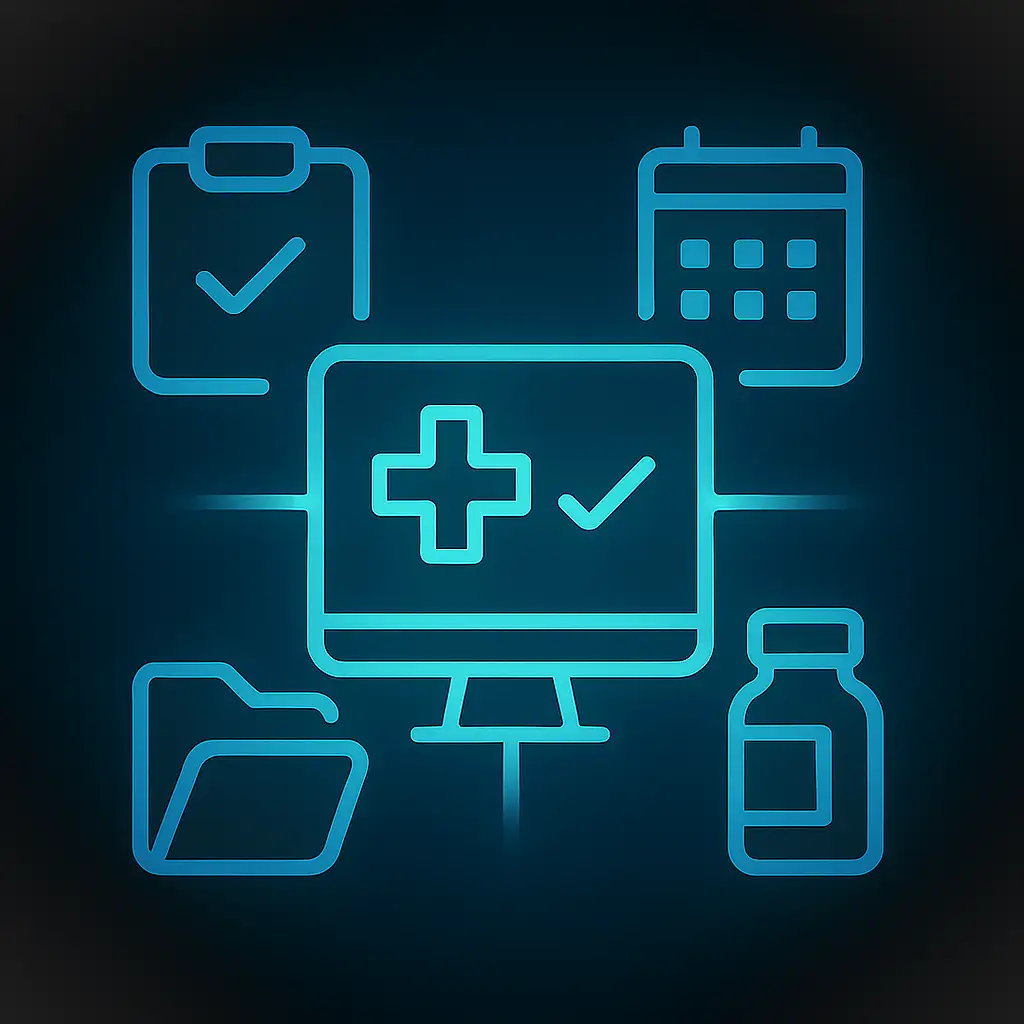Implementation of a CTMS in CHUV Pharmacy
Implementation of a Clinical Trial Management System in CHUV Pharmacy
The Clinical Trial Unit within the CHUV Pharmacy required a system to efficiently track information on its growing portfolio of clinical studies. To address this, a custom Clinical Trial Management System (CTMS) developed at the CRC Lausanne was implemented. The software, built in Microsoft Access, enables simple data entry via a graphical user interface, activity tracking, and reporting.
The CTMS offers multiple tabs covering different information related to clinical trials - from basic study information or first-patient/first-visit dates, through stakeholder contact details or timesheet recording, to milestone tracking and invoicing. Those functionalities, meeting the user requirements specified below, rendered the system a suitable choice for an implementation.
Motivation and Requirements
Between 2016 and 2020, the number of clinical trials handled by the CHUV's hospital Pharmacy increased by 49%, and while compliant paper-based processes were in place, the growing workload made it increasingly difficult to track activities, consolidate study data, and prepare accurate invoices in a timely manner. This led to an additional burden on already-stretched resources.
The project aimed to introduce a tool capable of:
- Centralized data recording — capturing all relevant clinical trial information in an accessible format, with the ability to easily generate statistics.
- Activity-based invoicing support — recording performed tasks, calculating their value, and summarizing amounts for each billing period.
As the CTMS was not intended to replace the validated paper record system, certain features typically associated with computer system validation — such as a robust user authorization model or audit trails — were excluded from the project scope.
Master Data Structure and Process Flow
The database operates on four core master data objects:
- Users – individuals entering trial-related data into the CTMS.
- Groups – roles assigned to users, such as Pharmacist or Pharmacy Technician, further distinguished by invoicing method (fixed-cost or time-based).
- Categories – task types, such as kit destruction or reporting.
- Milestones – predefined project objectives.
Composite relationships define operational responsibilities, e.g., which groups perform which categories of tasks, and which milestones require specific activities.
Operational use of the system occurs at three levels:
- Administration – creation and maintenance of master data and associations.
- Study setup – entry of project-specific details at initiation.
- Ongoing execution – periodic recording of activities as studies progress.
Project Execution
The implementation spanned three months (November 2024 – February 2025) and followed a phased approach:
- Assessment and requirements gathering – review of existing functionality and identification of necessary adaptations.
- Customization and iteration – development of pharmacy-specific enhancements and gradual release to selected users for feedback.
- Documentation and training – preparation of a comprehensive user manual and delivery of in-person training sessions for all team members.
- Data migration and go-live – transfer of existing data into the CTMS, followed by hypercare to resolve early post-deployment issues.
Discussion
The implemented CTMS improved the ability to track trials and prepare invoices. However, it also underscored a recurring theme in hospital and small-organization environments: overly complex systems, while feature-rich, can hinder adoption and inflate costs. For the CHUV Pharmacy, the most valuable functions were those directly linked to day-to-day operations - central data access, timesheet tracking, and invoice management.
Read More


